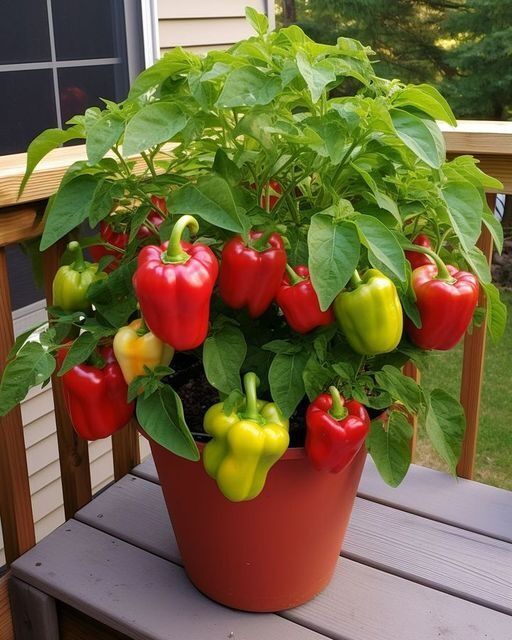Choosing the Right Variety
Can’t wait to experience the incredible flavour of just-picked bell peppers from your own garden? You don’t need to search any farther because this post contains all the knowledge you need to cultivate the tastiest bell peppers in your backyard. We can assist you regardless of your level of gardening knowledge.
There are a number of sweet bell pepper cultivars available, each with a distinct flavour, colour, and size. Here are a few typical selections:
- Green bell peppers: have a crisp, slightly bitter flavour because they are picked before they reach full ripeness.
Red bell peppers: When allowed to fully ripen on the vine, these peppers develop into sweet, flavorful gems. - Bell peppers in the yellow and orange kinds are colourful and tasty additions to any garden.
It’s crucial to take your local climate into account when choosing a bell pepper cultivar. Although they grow well in tropical areas, several cultivars are bred to flourish in colder locations.
These planting suggestions can help you achieve a plentiful yield and successful growth:
- Start with High-Quality Seeds or Seedlings: If you’re starting from scratch, go for premium, disease-resistant seeds. As an alternative, choose robust seedlings from a reliable nursery.
- Time Is Everything: A crop for the warm season is bell peppers. Start seeds indoors 8-10 weeks before the last expected frost date. Transplant the seedlings outdoors once the soil has warmed and all danger of frost has passed.
- Give Them Plenty of Sunlight: Bell peppers love sunlight! Make sure to plant them in a location that receives at least 6-8 hours of direct sunlight daily.
- Use Well-Draining Soil: Bell peppers grow best in soil that drains well and has a pH of 6.0 to 6.8. Adding organic matter to the soil will increase its fertility.
- Give Adequate Spacing: To promote healthy air circulation and stop the spread of illness, bell pepper seedlings should be planted 18 to 24 inches apart.
Applying a layer of mulch around plants can help conserve moisture, control soil temperature, and discourage weed growth.
Here are some care and maintenance pointers to guarantee robust growth and an abundant harvest:
Watering:
For your bell pepper plants to remain healthy, you must water them properly. Water them thoroughly and frequently enough to keep the soil damp but not soggy. Steer clear of overwatering as this might cause root rot. In order to allow your bell peppers enough time to dry before the chilly evening temps, it’s also advisable to water them early in the day.
Fertilizing:
As directed by the manufacturer, fertilise your bell peppers using a balanced organic fertiliser to encourage healthy growth. Take care not to fertilise too much as this can cause more foliage to grow than fruit.
Staking or Support:
Pest and Disease Control:
Common pests that might harm your bell pepper plants are tomato hornworms and aphids. Examine your plants on a regular basis and take appropriate action, such as employing natural pest control techniques or applying organic insecticides. Additionally, it’s critical to watch out for any disease-related symptoms, such as powdery mildew or bacterial spots. If afflicted, apply the proper organic therapies to the plants as soon as possible.
By following these tips and providing the right care, you can enjoy a bountiful harvest of crispy and flavorful bell peppers straight from your own garden. Happy growing!
